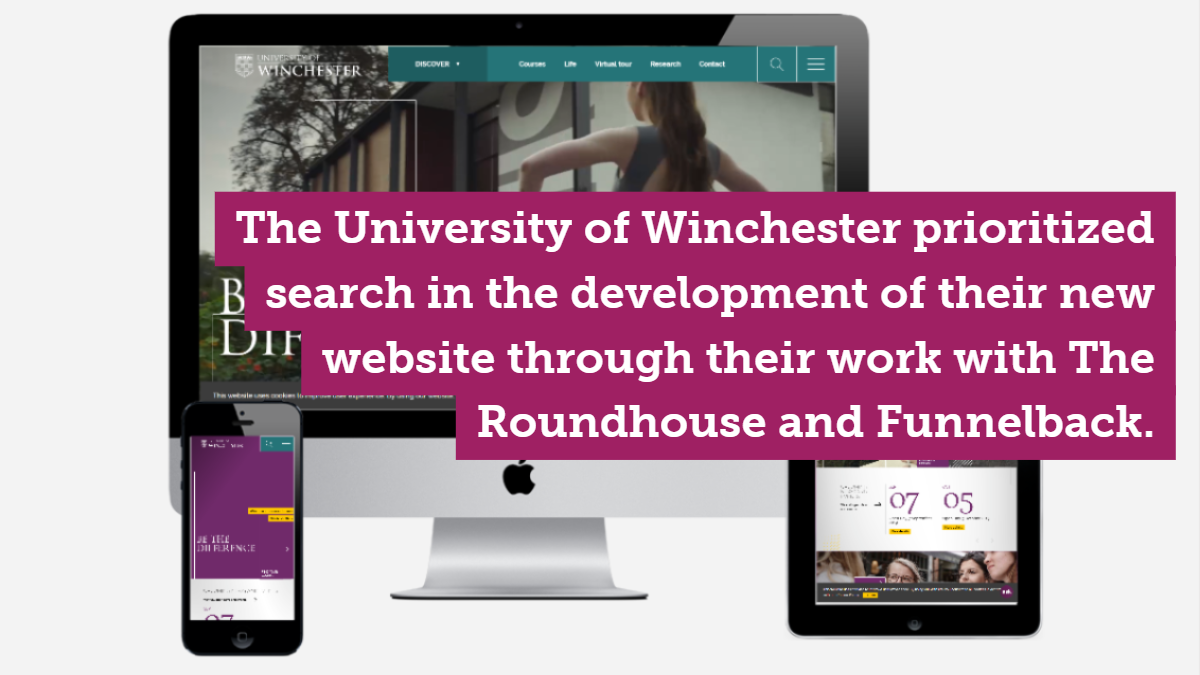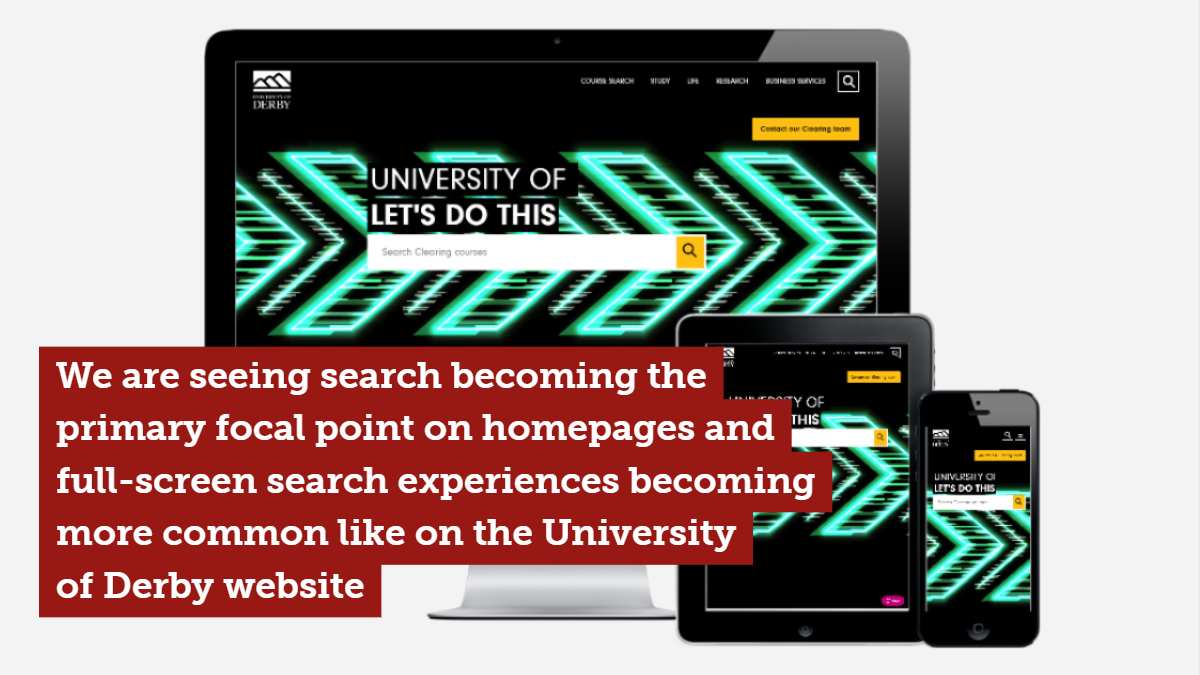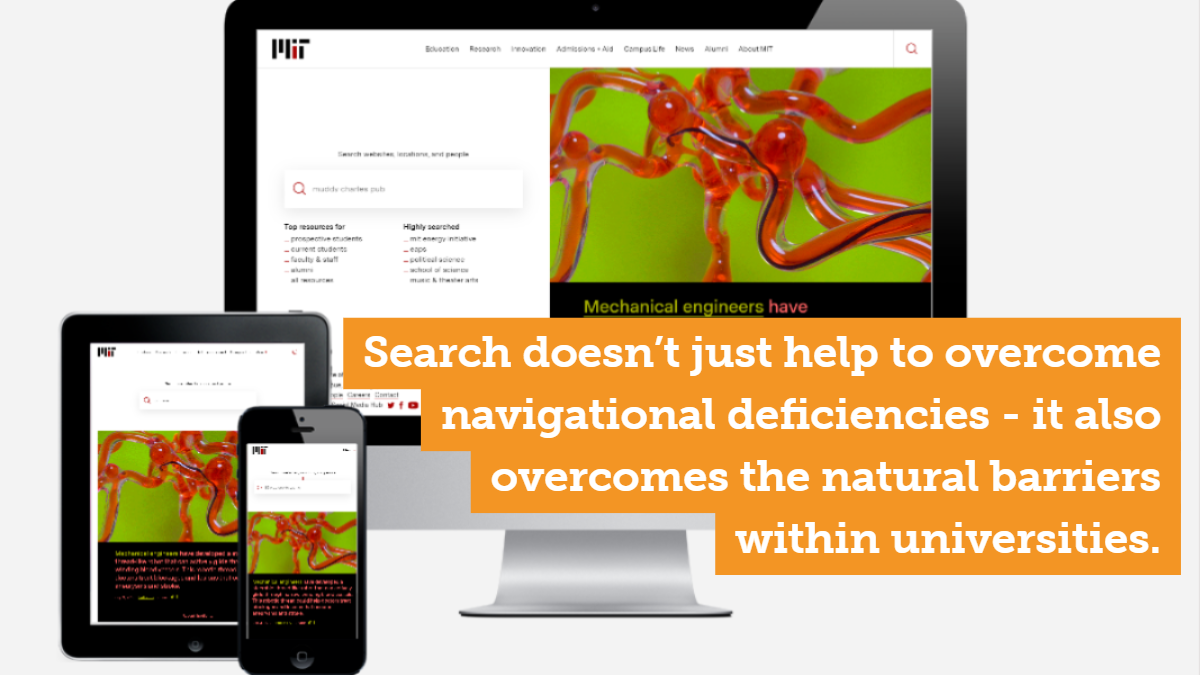Designing and optimizing your search functionality can have a huge effect on the user experience of your website.
Some institutions are therefore placing search front and center, sometimes commanding the main focal point of the homepage. For others, it's still an after-thought.
In this article, we consider how to create a search experience that delivers relevant results fast, with great usability and design.

Expectations of on-site search are increasing
Everyone is familiar with the frustration of using a bad search function: dull listings with no imagery, unhelpful results and no categorization, to name just a few.
For university websites, this scenario is no longer an option. Today's students are so used to a great search experience they anticipate your institution's website to have the same depth and power as Google or Bing.
They've grown up with powerful search as a given, along with wifi and cloud-based technology. And the expectations are only increasing further with general internet search growing in sophistication and voice search delivering ever more intelligent responses.
.png)
Why powerful search on your website matters
Search gives prospective students (and of course other site visitors) more control and lets them assert independence from websites' attempts to direct and funnel their user journeys.
And search can be their escape route when they are stuck in navigation deadends or can't find where they want to go to next.
Capitalizing on search also makes good business sense. Students who visit your site and utilize the search functionality exhibit more intent, and in the case of recruitment, are more likely to convert than their non-searching counterparts.
According to a higher education search solution, universities switching from a simple search experience to a modern sophisticated implementation saw a 48% reduction in search exits, and the time spent on site increased by 149%.

What a technically advanced design-led search experience looks like
The University of Winchester prioritized search in the development of their new website through their work with The Roundhouse.
The implementation stands out for its rich results and filtered views which were each designed to be tailored specifically for the type of content. Courses using the course listing layout found elsewhere on the site, for example, the event filter shows an attractively crafted calendar of upcoming events, the staff tab filters results into a profile listing layout, and media and blog content is shown in a news listing design.
Meanwhile, the University of the Arts benefits from real-time results which are initiated from the third character entry in the search bar, offering suggested results and course details.
The institution has also used a search solution to increase the visibility of scholarship opportunities available to students by outlining eligibility in simple user experience, with the heavy lifting going on behind the scenes to calculate the numerous eligibility conditions.
Having previously existed as an A-Z list, a visitor would need to either know the exact name of the scholarship they were looking for or would have to wade through over 80 options to find the best fit for them. By making the information more accessible, the search solution helped transform a once static page into a dynamic and responsive search module.
And at the University of North Dakota, search featured as a major part of their recent redesign too, and the result has been a 97% increase in search usage, with over a third of clicks now going to search-curated results.
.png)
The ascent of search in higher education
Numerous university sites still have a sub-optimal search experience but this is gradually changing as institutions invest specifically in search projects.
Universities with cutting edge search functionality are rightly putting it front and center on their website. It's a usability enhancer, an indicator of professionalism, and of course, also gets prospective students to content quickly and efficiently.
But more than this, we're seeing an emerging trend of search becoming the primary focal point on homepages and full-screen search experiences becoming more common. Look no further than the University of Derby, the University of Sydney, or Massachusetts Institute of Technology for examples.

Beyond this, search doesn't just help to overcome navigational deficiencies - it also overcomes the natural barriers within universities. This same search capability can be put to great effect crawling across documents as well as web content, and to transform university Intranet solutions which typically lag behind website experiences.
The result is more information finding its way into the hands of the right people and the prospective students making decisions about courses and institutions.
Perhaps we're currently only scratching the surface. Where do you see search evolving in the coming years for your institution?

:format()//media/Search-Blog.png)